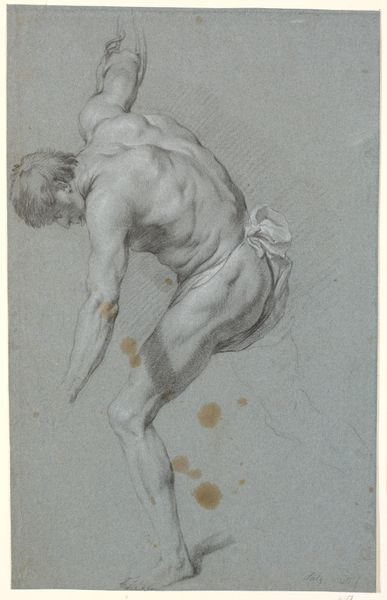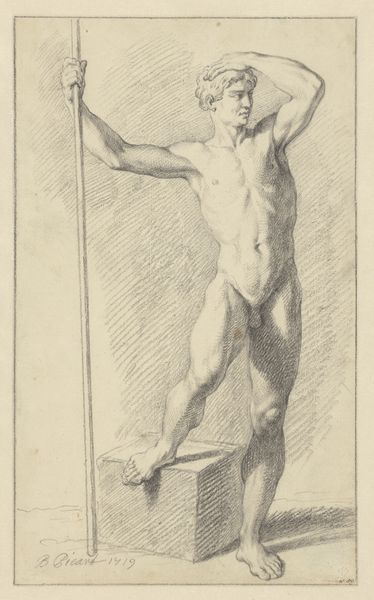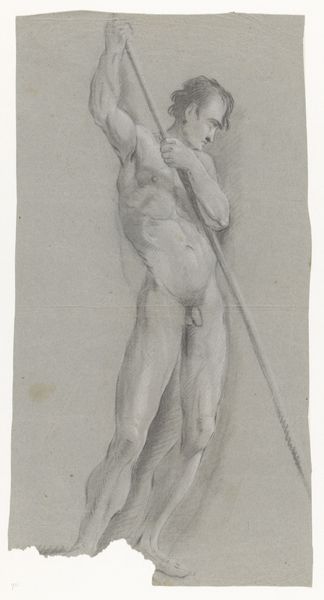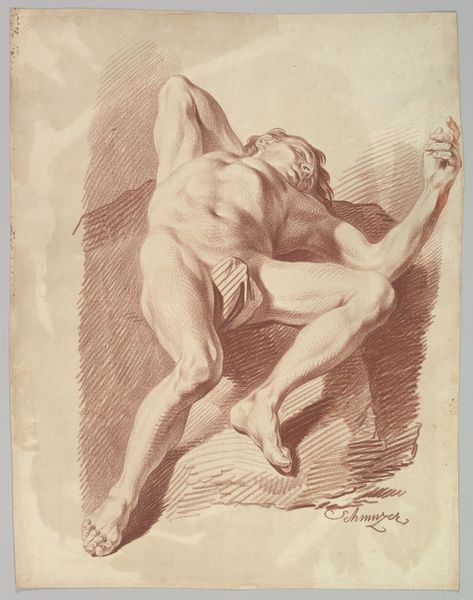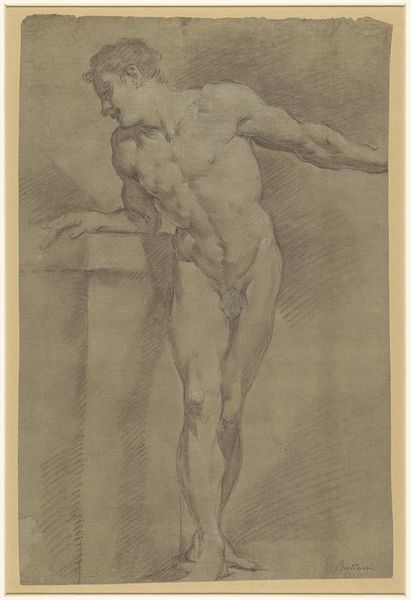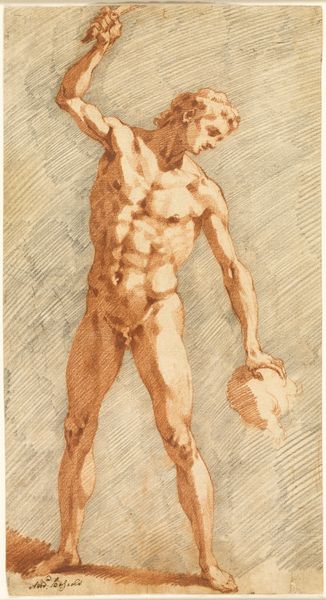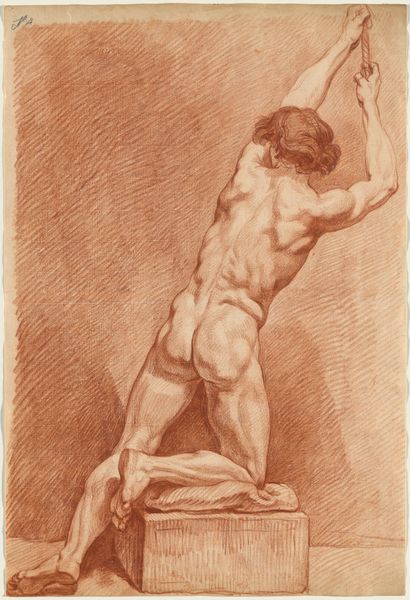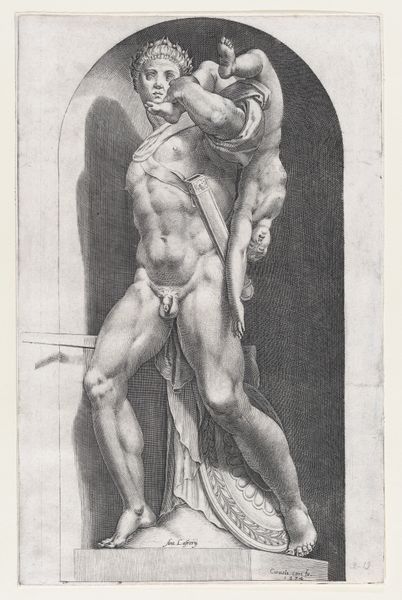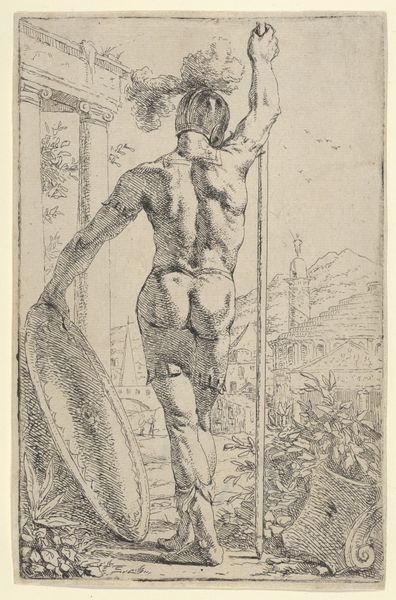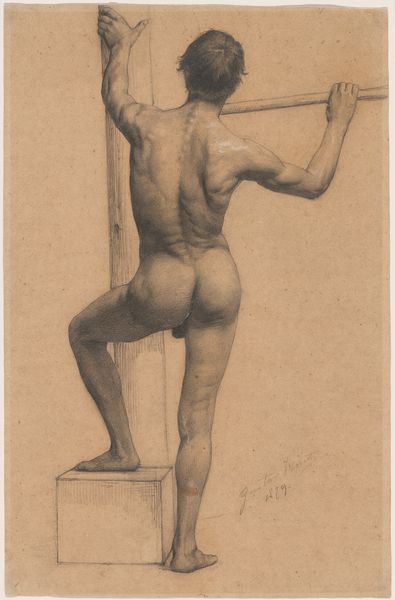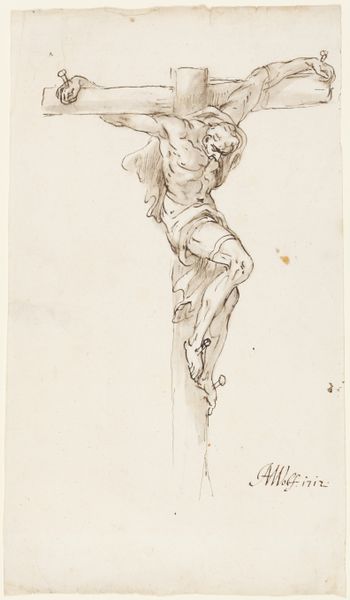
drawing, print, charcoal
#
drawing
# print
#
charcoal drawing
#
figuration
#
11_renaissance
#
oil painting
#
charcoal
#
history-painting
#
italian-renaissance
Dimensions: 11-1/8 x 4-1/2 in. (28.2 x 11.4 cm)
Copyright: Public Domain
Curator: The piece we're looking at is entitled "Christ on the Cross", created sometime between 1505 and 1515. Although the artist remains anonymous, the artwork originates from the Italian Renaissance. It’s a charcoal drawing, giving it a distinctive textural quality. What are your initial impressions? Editor: My immediate reaction is one of intense agony. The artist captures a raw physicality; the figure contorts in such a way to visually emphasize strain. It seems as if gravity itself is torturing this man. Curator: Indeed. The way the body strains provides context to how individuals were subjected to the violence of imperial expansion. The posture is quite unique. Usually, Renaissance depictions show Christ more upright, accepting his fate with dignity. This piece seems to reflect more struggle, perhaps reflecting a period of questioning the church's authority. Editor: Precisely! The angle and composition do something extraordinary. Observe how the arms extend upward only to curve into that deeply unnerving twist of the torso and legs. The eye is drawn downwards to that singular, supporting block on the tree that offers no visible comfort. Curator: Note too the crown of thorns, less a symbol of divine sacrifice here and more a stark reminder of the real, human suffering endured. The artist perhaps critiques the romanticization of such narratives, reminding the viewer of the sheer brutality. Considering the potential period, what interpretations would that elicit during the reformation? Editor: The chiaroscuro effect – the strong contrast between light and dark – also reinforces this. Areas of his body, and of the tree, catch the light dramatically, emphasizing the texture of the charcoal itself. This highlights, quite literally, both vulnerability and roughness. Curator: I agree; the material quality further underscores the artwork's socio-political implications. Perhaps in some interpretations it mirrors social uprisings happening around this time and a challenge to societal structure itself? This all occurs during early movements of social reckoning across Europe. Editor: It is a markedly different perspective, one that invites us to grapple not only with religious meaning, but with our physical responses to what the art evokes through form. A work like this serves as a masterclass in manipulating line and shadow, directing our focus in such a masterful way that amplifies tension. Curator: Well, reflecting on how the art historical lens allows one to look through to understand the cultural influences that went into making it, what we end up viewing is the unique visual interpretation itself as being a cultural marker of change. It becomes quite the reflection to ponder over, to be sure! Editor: And so it is with formalistic exploration as well; as visuality takes over to offer the artwork’s initial response, which is inevitably felt throughout any additional observations to follow. Fascinating.
Comments
No comments
Be the first to comment and join the conversation on the ultimate creative platform.

